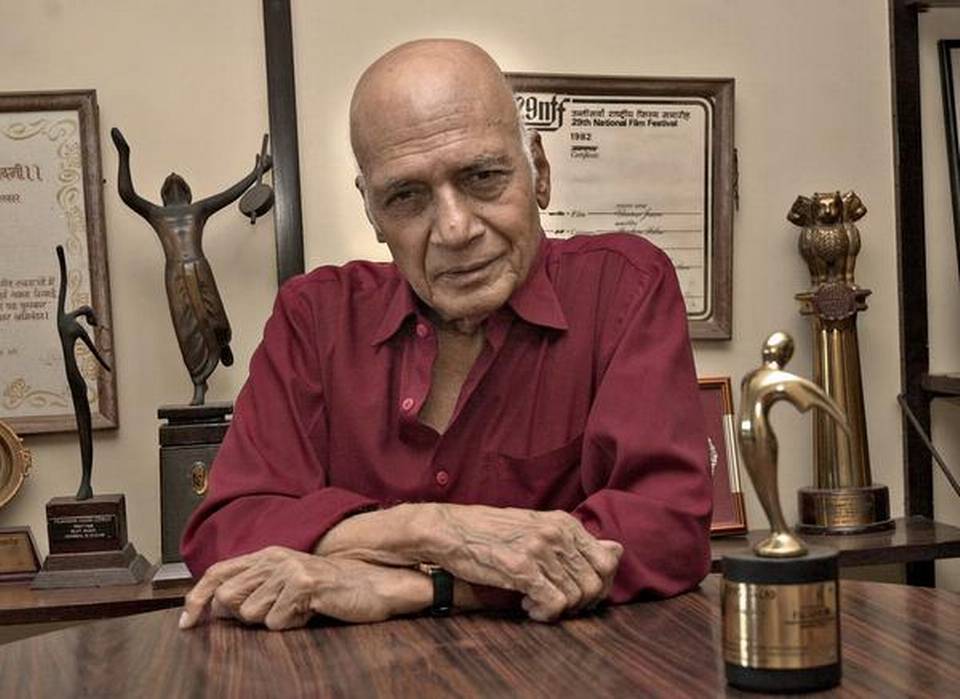Rahon, PUNJAB / Mumbai, MAHARASHTRA :
A composer who understood the nuances of Urdu and Hindi as much as the ‘sargam’ itself
If there is one word or phrase to pin down Khayyam’s music , it would be ‘literary’ or ‘poetic’. He was a music composer who understood the nuances of Urdu and Hindi as much as the ‘sargam’ itself. So, in the ideal spirit of collaboration, the songs were deeply resonant both in the thought and feeling of the writer as much as Khayyam’s own melody. No wonder some of his films had the poet or the artist as a protagonist, points out film and music expert Pavan Jha. The acme of it were Umrao Jaan (1982, Rekha as a courtesan) and even more so Kabhi Kabhie (1977 Amitabh Bachchan as a ‘shayar’), two of the biggest successes of his career in Hindi cinema that began in the late 40s.
Yash Chopra’s Kabhi Kabhie also marked the peak of his steady association with poet-writer-lyricist Sahir Ludhianvi, the other high point of which came earlier in Phir Subah Hogi (1958) and later also in Trishul (1978).
While remaining resolutely “Indian”, Khayyam’s music spanned a range — from the classical to semi-classical, folk to ghazal. “From pahadi to Punjabi, Braj to Awadh his musical influences encompassed the entire North India. He composed one of Mohammed Rafi’s best non-film bhajans — Paoon padoon tore Shyam,” says Jha. His contribution to the light classical non-film music may have come under the shadow of the film music but was just as significant. He was the one to have composed I Write, I Recite for Meena Kumari with the actress singing her own ‘nazms’ in the album.
Changing with the times
When it came to film music itself, he never got straitjacketed in any specific style, kept adapting with the times, the subject and characters of his films. So, in a film like Kabhi Kabhie, along with a melancholic and romantic title track and Main pal do pal ka shayar hoon he also created the youthful and energetic Tere chehre se, Pyaar kar liya to kya and Chahe chale chhuriyan. In Phir Subah Hogi he composed the devastatingly satirical Aasman pe hai khuda, a brilliant comment on the sad state of the nation, which resonates till date. As do Chin-o-arab hamara and the sad yet hopeful Wo subah kabhi to aayegi. Yet in the same film soundtrack he also had the beautiful love song Phir na keeje meri gustaakh nigahee ka gila.
Though he came out with great work in every decade that he spent in the Hindi film industry, it was not until the 70s and 80s — with Kabhi Kabhie and Umrao Jaan — that he catapulted into the big league of music composers. His amazing repertoire in the two films is what most would recollect him for, but there have been gems studded all over his abundantly rich discography. Like the Sahir creation Parbaton ke pedon par shaam ka basera hai in Shagoon (1964), Majrooh Sultanpuri’s Shaam-e-gham ki kasam sung from the heart by Talat Mehmood in Footpath (1953) or Majrooh’s Rafi-Suman Kalyanpur duet Thehriye hosh mein aa loon from Mohabbat Isko Kehte Hain (1965). There are the beautiful Aankhon mein humne, Aaj bichade hain and Hazaar raahein in Thodisi Bewafai (1980) and Dikahyi diye yun, Karoge yaad to and Phir chhidi raat in Bazaar (1982).
Kaifi Azmi was another writer-lyricist with whom Khayyam created magic in Shola Aur Shabnam (1961) with songs like Jeet hi lenge baazi hum tum and later in Akhri Khat (1966) with Bhupendra singing Rut jawan jawan, raat meherbaan. Of the present lot of lyricists, though he had a great friend and admirer in Gulzar, he collaborated briefly with him in Thodisi Bewafai and later, in the 90s, on the television programme Dard (Dil ka ek chehra dikhayi dega, sung by Jagjit Kaur and Bhupendra). There was an abandoned venture of the two, called Kharidaar, in which actor Rekha is supposed to have sung one song. Also, Khayyam and his wife, singer Jagjit Kaur, are said to have organised the sangeet for Rakhee-Gulzar wedding.
Among the playback singers he worked a lot with Talat Mehmood, Mukesh and even more so with Mohammed Rafi. Perhaps one the best examples of teaming up with Rafi was the mellifluous and haunting Kahin ek naazuk masoom ladki in Shankar Hussain (1977). Not to forget Aur kuchh der theher in Akhri Khat and Jaane kya dhoondhti rehti hain ye aankhein mujh mein in Shola Aur Shabnam, the latter taking Rafi’s voice from low notes to the high in a magical seamless musical stretch.
Lata Mangeshkar sang the lilting Baharo mera jeevan bhi sanwaro in Akhri Khat under his baton, Aap yun faaslon se and Apne aap raaton mein in Shankar Hussain and Aye dil-e-nadaan and Khwaab ban kar koi aayega in Razia Sultan (1983). He was one of the crucial figures to have helped shape Asha Bhonsle’s formidable career. The two peaked in Umrao Jaan but it was in an earlier film called Footpath that Asha got the major break of getting to sing for the lead. He also gave the film industry the booming vocals of Kabban Mirza in Aayee zanjeer ki jhankar in Razia Sultan and unique voice of Jagjit Kaur, also his wife, in songs like Tum apna ranj-o-gham apni pareshani mujhe de do in Shagoon(1964) and Dekh lo aaj humko jee bhar ke, koi lauta nahin phir marr ke in Bazaar(1982), a prophetic song in retrospect.
source: http://www.thehindu.com / The Hindu / Home> Entertainment> Music / by Namrata Joshi / May 20th, 2019









